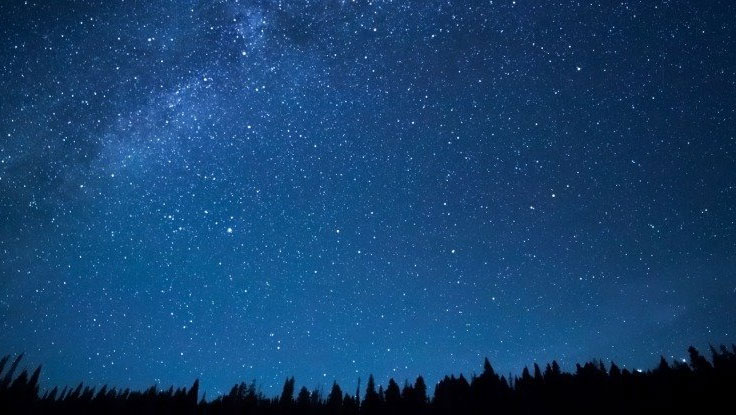Jupiter and Saturn will shine beautifully in the sky from today
The summer is coming, and the big planets like Jupiter and Saturn will give the sky observers the evening the wonderful scenes. Venus will distract those who walk in the morning because of their beauty and Mars begins to interrupt the seasons for a long time.
You will come across a full moon when it reaches Jupiter's brightness in the southern sky on the evening of June 2, it continues its journey through our planet on June 3 . Neighboring Moon also flips Spica star on June 4.
A large gas planet will appear and pass through the Virgo constellation. They will grow in the middle of the afternoon throughout June and will flood south, soon after it rains early in the month.
According to the US Naval Observatory, Saturn will reach its opposite position on June 15 - when the planet is located opposite the Sun at an angle of observation from Earth. You will see a full Saturn.
This month, Jupiter will have zero apparent brightness, it will be bright enough for us to observe from cities. At the beginning of the month, it will grow around 9 pm, but it grows at 8:20 pm (before sunset) in mid-June.Find it in the late evenings, in the lower part of the southeast sky.

The sky will be gorgeous in June.(Photo: Pozdeyev Vitaly).
After that, move south and you can catch the image of Jupiter before the sun rises in the southwest. The full moon (June 9) will 'wander' near Jupiter on June 9-10. This is the smallest full moon day of the year.
We will continue our journey to Mars - Earth's neighboring planet in the summer. From the Earth's point of view, the red planet will approach the Sun until September - before it returns to the morning sky.
Venus will head east making it brighter in early June. It captures the mind of the universe at a magnitude of -4.5 degrees - this intensity is quite bright to observe. In the middle of the month, this planet is lighter than the intensity of -4.3 degrees, and there is not too much fog.
If you walk in the morning look to the east before dawn, you will not be able to miss Venus! The crescent moon alone will touch the planets in the mornings from June 20 to 21.
According to Naval Observatory, June will have two first quarter moons. On the east coast this month, the Moon will officially grow at 8:42 am in the east, June 1. The second moon grows on June 30 at 8:51 pm.
Summer will officially begin on June 21 just after midnight, which is when the Sun seems to touch the northern hemisphere's northern line.
In the period of 10-17 June, we will see the earliest sunrise at 5:42 am and the latest sunset comes at 8:38 pm on June 27-28 in Washington.
Actual events:
- June 2 - Watch the Sun safely, encounter Saturn, Jupiter and other objects through telescopes and binoculars. You can also find interesting things about the universe at the corner of the Washington Monument base, organized by Hofstra University of Long Island.
- June 5 - ' Quasars and Supermassive Black Holes' is the name of a talk by astronomer Sylvain Veilleux, at the University of Maryland, College Park Observatory.
- June 11 - "The Sudbury Meteor Impact Event" is a geologist's talk Bill Cannon - who will discuss large craters about 250 miles northwest of Toronto, at the regular meeting of Northern Virginia Astronomy Club.
- June 20 - Astronomers talk about the universe and then enjoy the sky through a telescope.
- June 22 - "Big trip: Explore extrasolar planets" is a presentation by astronomer Heather Knutson at the California Institute of Technology, Lockheed Martin Imax Theater, Museum of Air and Space Nation.
- Overview of Saturn
- Discovering diamond rain on Jupiter and Saturn
- Super typhoon on Jupiter is narrowing
- Saturn overtakes Jupiter with the number of orbiting satellites
- 1000 tons of diamonds poured down on Saturn and Jupiter every year
- 10 best photos of interplanetary cruise ship
- The amazing thing that NASA's Juno spacecraft has just made
- Tomorrow, NASA satellite officially approached Jupiter
- Overview of Jupiter
- Discovered 20 new moons of Saturn
- Pentagon line up in the sky
- Super storm is enough to swallow 4 Earths
 Van Allen's belt and evidence that the Apollo 11 mission to the Moon was myth
Van Allen's belt and evidence that the Apollo 11 mission to the Moon was myth The levels of civilization in the universe (Kardashev scale)
The levels of civilization in the universe (Kardashev scale) Today Mars, the sun and the Earth are aligned
Today Mars, the sun and the Earth are aligned The Amazon owner announced a secret plan to build a space base for thousands of people
The Amazon owner announced a secret plan to build a space base for thousands of people